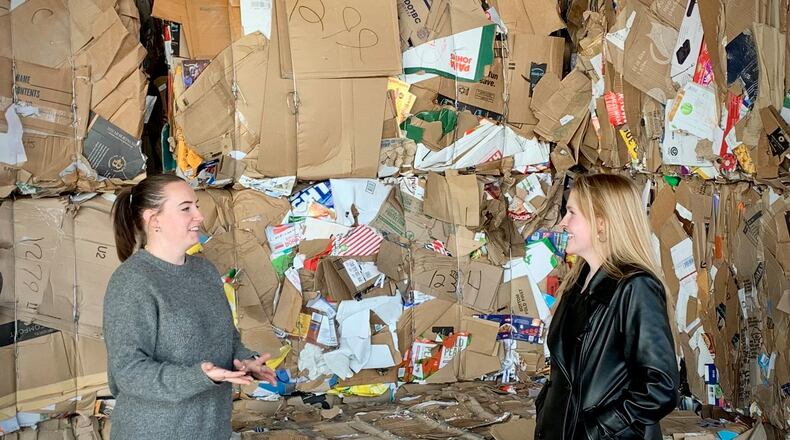Greene County is one of many recycling facilities across the region that handle all your Christmas cardboard. The e-commerce boom of the last decade means that more and more cardboard gets processed by these facilities during the post-Christmas season, said Dana Doll, Manager of Greene County Environmental Services.
“We will see a very targeted increase,” she said. “And the number one item is cardboard boxes.”
Additionally, any live Christmas trees that are dropped off at their facility will be recycled into mulch that residents can use on their lawns at no cost.
“We do not treat our mulch. We do not add any chemicals,” Doll said. “Whatever material is delivered to our facility is processed into mulch, and that is available to the residents of Greene County.”
Greene County Environmental Services also sees a spike in residents dropping off lithium batteries, old string Christmas lights, and similar items.
“We will take your holiday string lights year round, but obviously, most people have most of their lights out October through February,” Doll said. “So we want to focus on collecting those holiday string lights at Greene County Environmental Services because they are contamination in the curbside recycling.”
While they can and should be recycled, string lights will get tangled in the machines that sort curbside recycling materials, said Molly Kennedy, Dayton Region Communications Coordinator for Rumpke Waste and Recycling, which can be both time-consuming and dangerous for workers.
“There’s spinning discs that separate plastics and glass and paper and aluminum,” Kennedy said. “But if you have something like string lights or like a flexible plastic of some type, it gets stuck in it. That slows down our processing, because we have to shut that machine down, and someone has to go in and actually cut all that material up, break it apart.”
The best thing to do particularly with old Christmas lights, batteries, and live Christmas trees is to bring them directly to facilities like Greene County Environmental Services, at 2145 Greene Way Boulevard in Xenia, where they can be disposed of properly.
One of the challenges of recycling certain items is that what facilities can recycle varies by municipality or service. There are old mainstays, like cardboard glass and aluminum, but for “specialty” recyclables, it’s always better to ask. The first thing to do is check with your local municipality on what items they can and cannot recycle.
“Recycling is constantly evolving and constantly changing because we want to be able to recycle more, not because we want to make it harder or more complicated,” Kennedy said. “It’s because we want to take this single use item and be able to make it into a multi use item.”
Credit: Jim Noelker
Credit: Jim Noelker
Greene County processes 500 tons per year in recycling, though has a comparatively lower weight count since it mostly processes cardboard and yard waste. Between public and private enterprises, including Rumpke and other big box stores, all of Greene County produced 51,000 tons of recyclable materials, according to Environmental Services data.
And your recycling is a hot commodity, Doll said.
“When people drop things off to recycle at environmental services, or when they put the correct materials into their curbside bins, there are markets available for those items,” she said.
Rumpke recycles 1 billion pounds of materials annually, distributes 95% of its collected recyclables to domestic markets, and 80% to markets in the Midwest. Many of Rumpke’s partner businesses that turn materials into new products are located in Ohio. Those holiday string lights, along with other metals, are sent to River Metal in Xenia to become new products, and Christmas wrapping paper and old Amazon boxes are sent to Wapakoneta to be turned into new boxes.
“I’m always telling people...it’s not smoke and mirrors,” Kennedy said. “We’re doing the work. We’re vetting our end users. We’re making sure all of our material that we say can be recycled is actually going to be recycled.”
“This is a great time in the industry,” Doll said. .”I’ve seen more change in the last three to five years of validation of our circular economy, improvement and how we’re moving these materials and recycling more. So it’s real. This is real, and it’s real to the economy of the state of Ohio,
About the Author


